


Why collaboration is at the heart of the designer’s collections
When Harris Reed was growing up, he wore tights underneath his trousers and dreamt of a life in fashion. After a dream course at Central St Martin’s, including a particularly memorable addition to their annual White Show, he found himself in high demand from some of the biggest names in the industry. Since then, he’s made sure that his boundary-pushing work is created by his army of collaborators: from milliners to embroiderers to illustrators. Here he tells his story to writer Jack Moss, and spotlights some of the people he looks to to make his collections sing.
Harris Reed is in the lobby of The Standard, the London hotel which has recently become the home of his eponymous label. They’ve given him a room upstairs to work, turning one of the hotel’s suites into a makeshift atelier. “It’s like the Chelsea Hotel,” he grins, referring to the legendary New York spot where Robert Mapplethorpe, Patti Smith, Nico et al worked and slept, giving pieces of their art to the owners in lieu of rent. The Standard might not yet boast such residents, nor such a payment scheme, but Harris does have a neighbor—friend and fellow designer Chet Lo has started his own studio in the suite next door, the pair trading advice about their fledgling labels. “He will give me input, emotionally, about the brand. But he’ll also come in and look at one of my jackets and be like, ‘that’s basic as fuck.’”
I always think when you are trying to convey something, you have to believe it with every bit of your body.
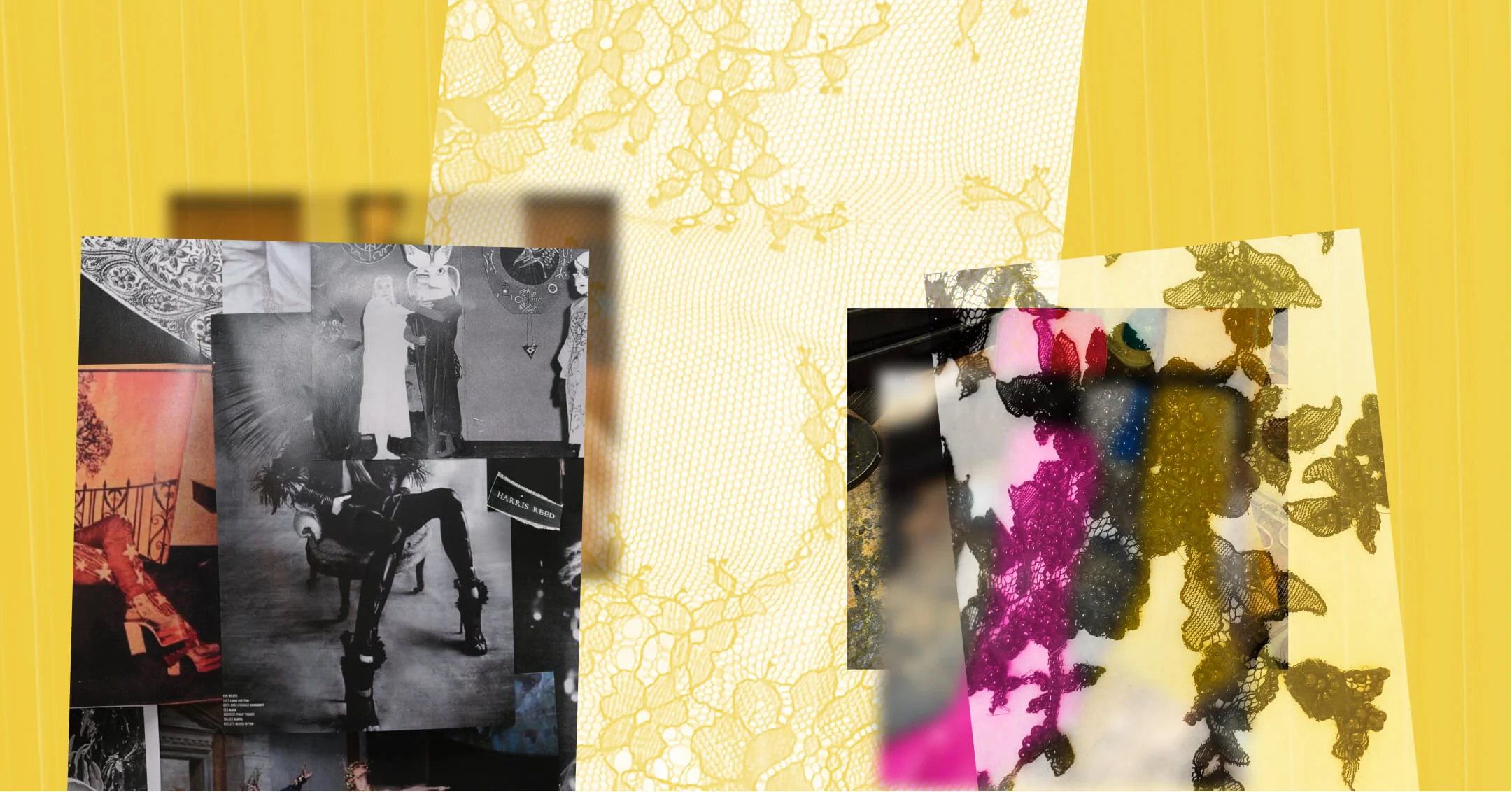
You would be hard-pressed to describe the finished article in such terms; Reed’s collections are defined by a sense of grandiosity and drama, the pieces often large, demanding space. His aesthetic is now well-known, thanks to his 550,000 Instagram followers, a number at least in part down to the patronage of Harry Styles, who wore a custom-made Harris Reed crinoline gown in a cover story for American Vogue. A suit on top, a taffeta-and-tulle skirt beneath, it epitomized Reed’s work, where garments teeter between two worlds, without ever really landing in either—masculine and feminine, most famously, but also DIY and haute couture, his creations formed from leftover yards of deadstock tulle and sequins, or discarded wedding dresses found at Oxfam. It always returns to the act of dressing up, a preoccupation since childhood. “I’d be annoyingly draping something on my sister while bribing her with graham crackers.”
Harris Reed grew up in the United States, his father a British film producer, his mother an American model turned candlemaker and painter. “She’s very loud and fabulous, and has all these amazing clothes and costume jewelry,” Reed says, recalling how he would wear a pair of her fishnet tights almost every day as a teenager, even under trousers. Clothes, he says “became armor,” a way for him to define himself when it felt like everybody around him had already labeled who he was. He would post photographs of himself on lookbook.nu and Tumblr, constructing elaborate outfits, often with handmade elements: “I always think when you are trying to convey something, you have to believe it with every bit of your body, especially when you are living in a place like Arizona that’s so against you being authentically you. You have to almost narcissistically believe that you are this fabulous thing.”

Reed first encountered the London art school Central Saint Martins, known for its prestigious BA and MA fashion courses, in a copy of Women’s Wear Daily, and immediately knew that it was the only school he wanted to attend (he didn’t apply to another). “I remember looking at pictures of Riccardo Tisci and Stella McCartney, and knew they’d been there. I know it sounds cliche, but it became my salvation—thinking, ‘I’m going to be there, that’s my tribe, that’s my community, that’s what I’m going to be a part of.’ And I think I never let go.” After a “hardcore” interview— “I sat down and the lecturer ripped through my portfolio saying how bad it was”—he got in, moving to London in 2015.
Community was not immediate. He remembers struggling through his first year. “It was extreme, it was cutthroat, everybody was trying to stop each other. But by the end of that year the dialogue changed, I met all these friends from different course pathways, and the idea of collaboration became much more distinct.” He also began to build friendships in nightclubs and fashion parties, as well as through his Instagram account, which had swelled with followers after Harry Styles’s stylist Harry Lambert—who now styles Harris’s own collections—first dressed the musician in an outfit of his while he was still studying (it was originally made for “The White Show,” a Central Saint Martins rite of passage for first-year students, each presenting an all-white look).
It’s a very intense relationship you have with a collection.
Around the same time he was also discovered on Instagram by Gucci creative director Alessandro Michele, invited to walk for the brand’s Cruise 2019 show in Arles, France and later, became a face of Michele’s genderless fragrance “Mémoire d’une Odeur.” Reed’s personal look was now definitive: a chest-length tumble of Botticelli-esque red hair, a towering stature, clothing equal parts glam rock and Lord Fauntleroy. “Alessandro gave me two things, the first was the validation that I was beautiful, in a time that I didn’t feel beautiful. Second, on a more personal note, he gave me so much as a designer, watching his process, every button has this insane story, a history. And even though it’s become such a big company, it doesn’t feel like it’s ever lost any of its soul.”
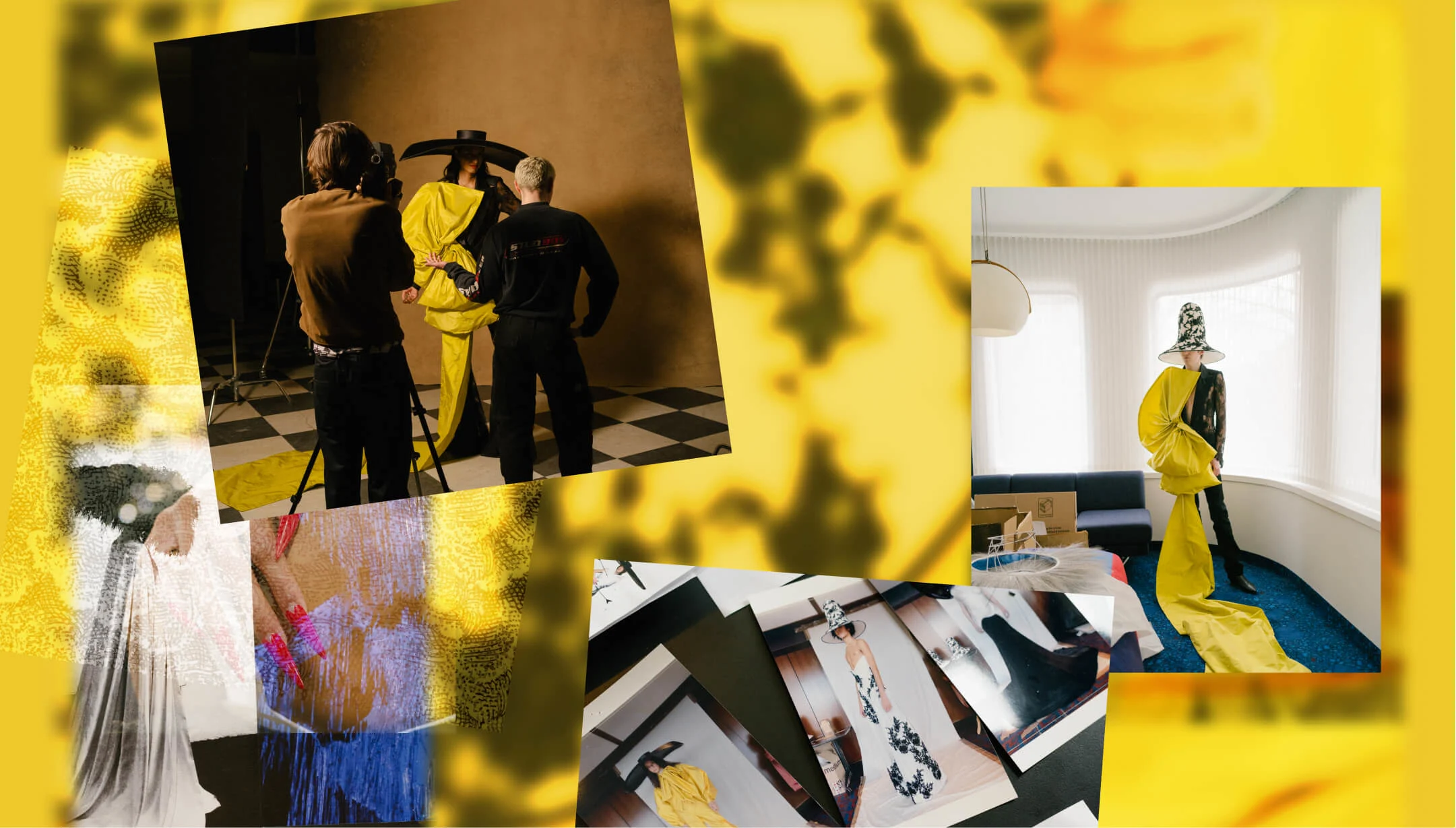
In some ways, Reed feels like a lone force—he is designer, muse and model at once, particularly on his social media account where he documents his life in detail (“my social media presence went up so quickly, that I kind of lost myself a little bit in the persona,” he admits). But he also likes company, citing collaboration as the most exciting part of having your own label—the make-up artists, milliners, shoemakers, set designers and PRs that it takes to put on a show post-graduation. His most recent, show over London Fashion Week in February, was the most distinct demonstration of this yet. Taking over London’s Saint John’s Smith Square, a dramatic tableau of models floated amid Lukas Palumbo’s illustrations of clouds while musician Sam Smith provided the live soundtrack, singing Des’ree’s Kissing You (“I’ve been messaging Sam for years on Instagram”).
The collection, he says, started as all his work does, with what’s at hand. This season, after a chance meeting on holiday, he had been given some leftover upholstery fabric from the Bussandri textile dynasty. Then, he thinks about silhouettes, before “a deep dive into the V&A” for references which are eventually woven into the collection (titled “60 Years a Queen”, this season playfully traced links between Queen Victoria, 1980s Voguing balls, and the colorful East London dancefloors he would frequent as a student). His ever-expanding circle of collaborators—milliner Vivienne Lake, shoe designer Alim Latif of Roker, stylist Harry Lambert, make-up artist Terry Barber, among others—are brought in at various stages, “to elevate everything.”
“It’s a very intense relationship you have with a collection, which is why you need people that you deeply respect to basically tell you you’re wrong. It’s been a delicate dance to be able to accept that—even in the last collection, the yellow look was meant to be white, I’d bought the fabric, but Harry [Lambert] said it needed to be yellow. And now it’s everyone’s favorite look, every single review, every editor, mentioned it.”
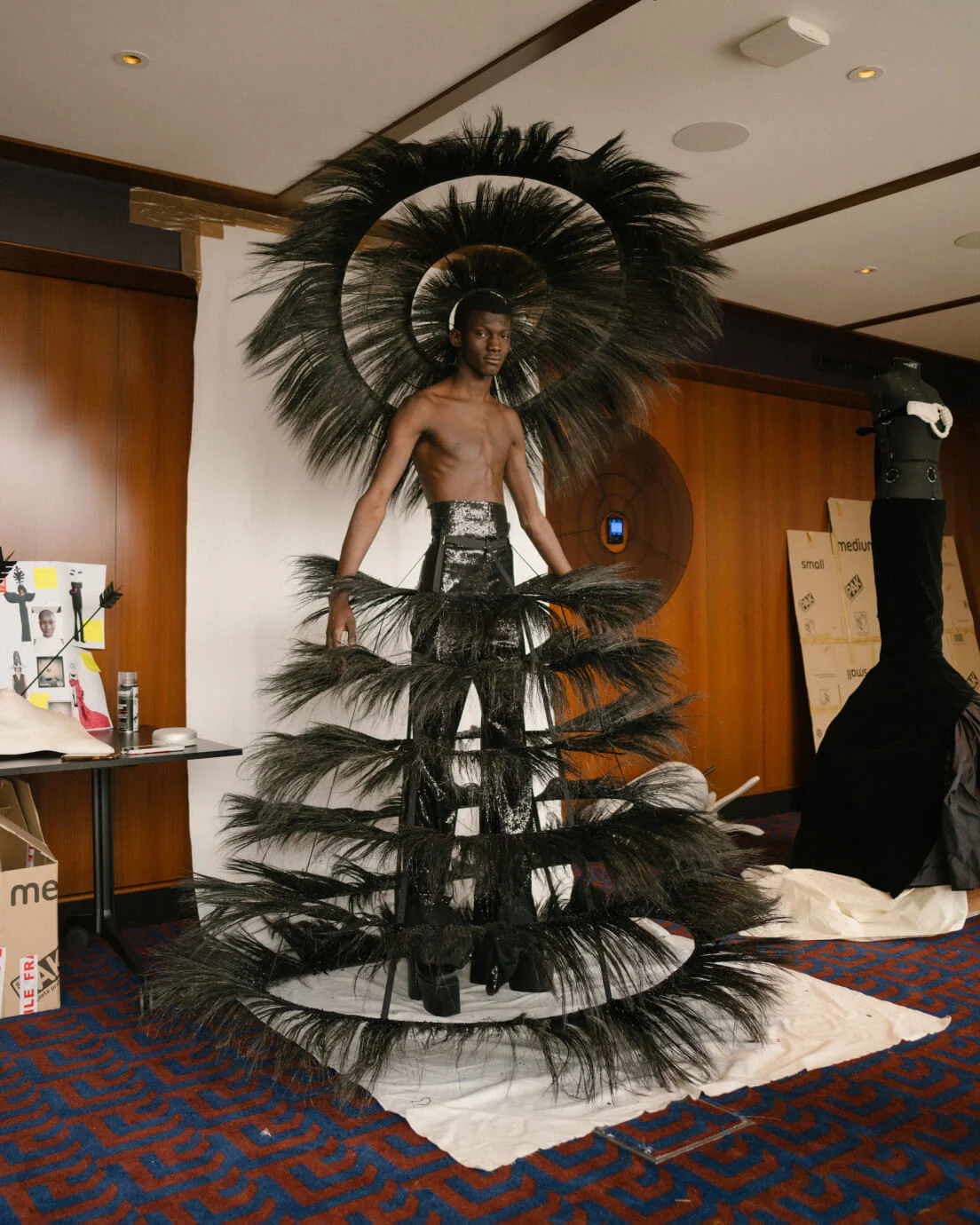
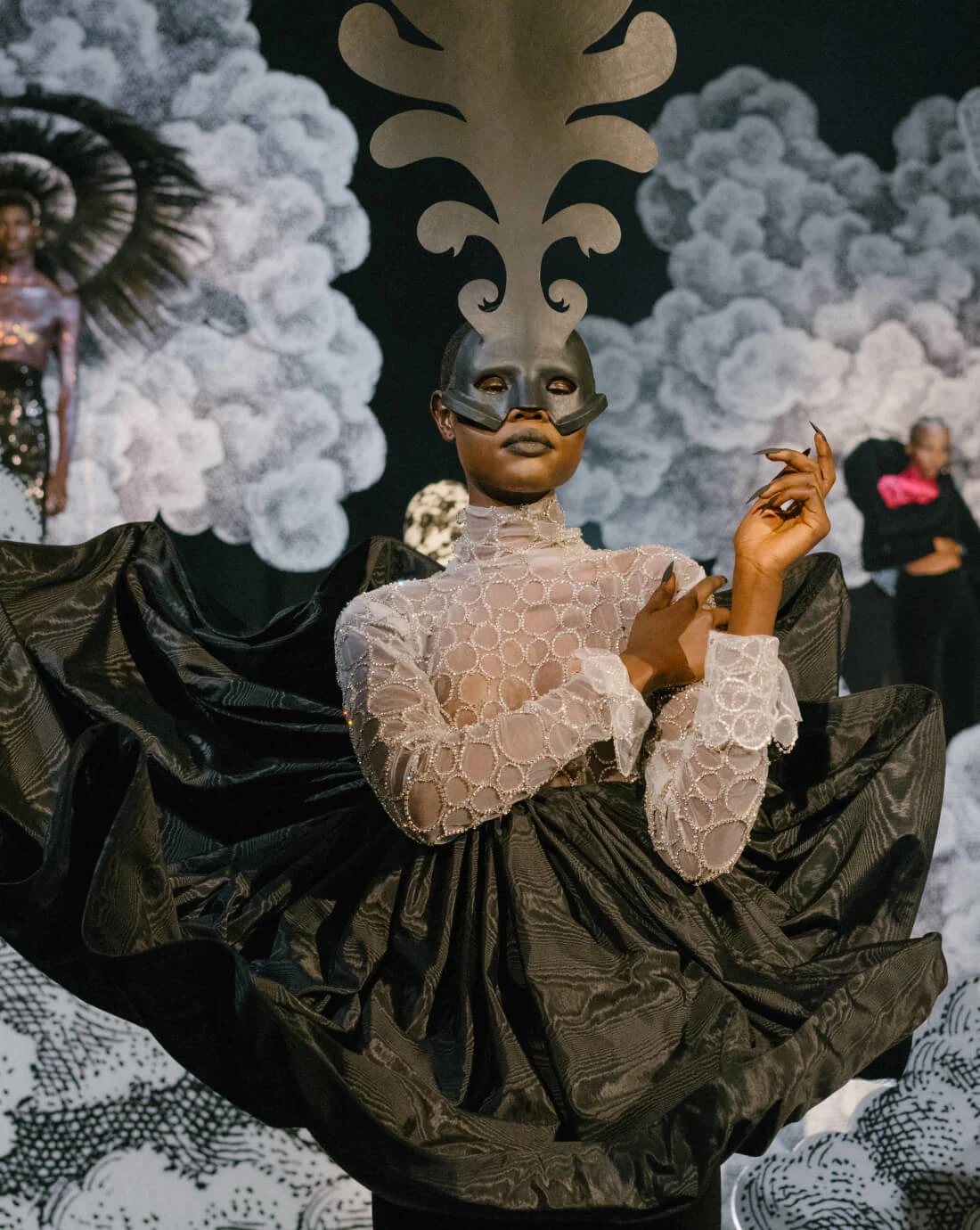
He says that each collaborator is different, with their own creative language. Some need detailed sketches, or hours-long phone calls, others react to movement, to Reed himself walking and posing in the clothing. As for what unites them, “I think it’s when someone’s a dreamer. The moment I get lost in somebody’s fantasy is when I know I’ve found the right person. Because my whole goal for the label is that people get lost in fantasy.”
This month, Reed’s work will become part of the V&A’s latest blockbuster fashion exhibition, Fashioning Masculinities, sponsored by Gucci— a fantasy all of its own. To coincide, he will hold a special retrospective show, part of the museum’s “Fashion in Motion” series. It puts him in the company of some of history’s greatest designers: Christian Lacroix, Alexander McQueen and Vivienne Westwood have all previously taken part. The show culminates a whirlwind 12 months—alongside his collections, he has also collaborated with Etro on a line of silk shirts, dressed celebrities from Emma Corrin to Adele, and created a crinoline gown, bedecked in gold leaf and feathers, for Iman to wear to the Met Gala, a deal brokered by American Vogue editor-in-chief Anna Wintour.
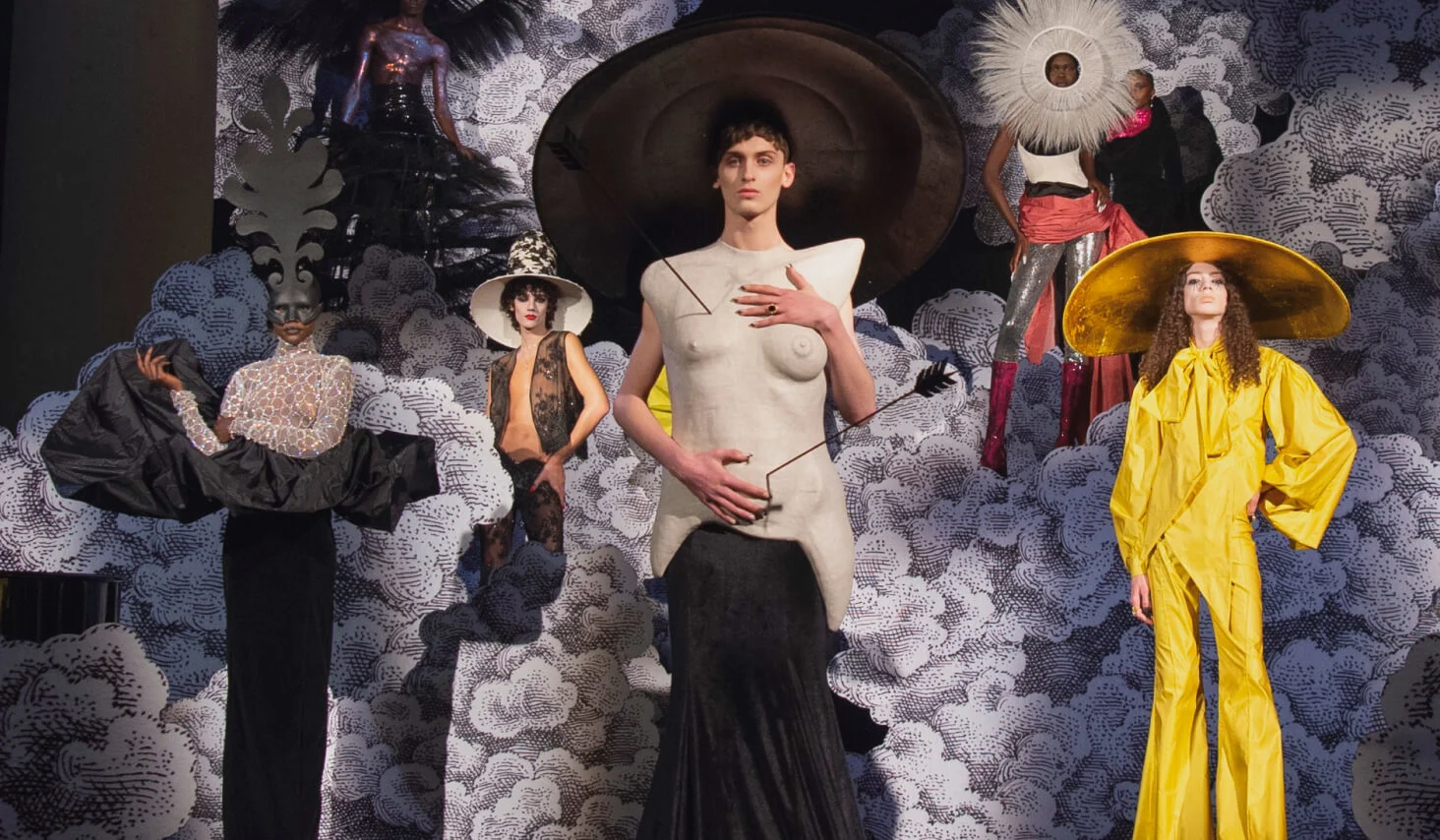
He describes the latter as a “homecoming”, the type of moment he fantasized about as a child (such is his fame on social media, the crowd gathered outside the Metropolitan Museum of Art were chanting his name). “All this work that I’ve literally done from my bedroom, and a hotel room, with all my collaborators and friends from around the world, coming into a physical space. It was crazy—seeing Hamish Bowles, Tom Ford, these people I’ve had the most incredible respect for, the reasons that I’m in fashion. It was epic.”